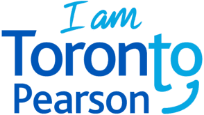As a global hub serving tens of millions of passengers a year, Toronto Pearson is a critical piece of regional and national infrastructure. Canada’s largest airport is also a highly complex business operation that depends on close collaboration among many different companies and organizations. Thousands of dedicated people work around the clock to connect Canada to the world and ensure the smooth, safe, expeditious flow of travellers, aircraft, baggage and cargo.
In 2017, recognizing how Pearson’s workforce had grown, we realized that we needed to know more about the people who devote so much time and energy to making our airport great: their diverse backgrounds and skills, their personal goals and challenges, and their ambitions for the future. We therefore agreed with the Toronto Airport Workers Council (TAWC) – a collective of union representatives from across Pearson – to undertake a three-phase approach to studying the issue.
In Phase 1, which spanned 2017–2018, we completed a benchmark review to understand how other multi-employer and multi-union environments manage workforce composition, contracting and labour forums. We identified opportunities to improve the GTAA’s own vendor contracts and implemented those changes. Then in 2018–2019, we undertook the first demographic study of a Canadian airport. The results of this comprehensive study were presented in a summary report published in October 2019: Understanding the Pearson workforce.
 Border Services Officer Bradley, CBSA (left) and Dave, Aviation Safety Officer, GTAA (right).
Border Services Officer Bradley, CBSA (left) and Dave, Aviation Safety Officer, GTAA (right).
What Pearson employees told us
- The remarkable diversity of Toronto Pearson employees is evident across many points of comparison, including age, gender, education, ethnicity, immigration history and other factors. Not surprisingly, the Pearson workforce reflects our surrounding communities, with their legacy of multicultural diversity.
- The majority of employees view Pearson as a workplace that provides not only a good job today, but opportunities to grow and progress in their careers. While most express a desire to advance from their current positions, they’re also clear that they want to continue working at the airport. This is true even for employees – typically young people or newcomers getting a fresh start in Canada – who experience some precarity because they work part-time and/or for minimum wage.
 Naida, Lost and Found Coordinator, GTAA (left) and Derrick, Deicing Specialist, GTAA (right).
Naida, Lost and Found Coordinator, GTAA (left) and Derrick, Deicing Specialist, GTAA (right).
We’re pleased with the collaborative approach that Pearson is taking to understanding the demographic profile of the airport’s workforce. And we’re looking forward to continuing in that spirit of collaboration as we explore future work based on these results, particularly with regard to addressing precarity and improving transit options for Pearson employees.
Steven Tufts, TAWC spokesperson
- Despite the general finding that our airport has provided good, stable employment opportunities for thousands of workers, this experience may not be shared equitably by everyone at Pearson. Those who work part time or for minimum wage are more likely to be women, immigrants and juggling multiple jobs (see the sidebar “What Pearson employees told us”).
- A significant challenge for many Pearson employees is the commute to work, which averages two hours per day. Most travel by car, even if they live relatively close to the airport, as they don't feel there are any available public transit options.
The workforce survey provides tangible data to reinforce what many Pearson employees express anecdotally: our airport is a dynamic work environment where many employees look forward to rewarding careers. The insights gained from the survey will inform future planning by the GTAA. At the same time, the findings suggest avenues we can explore with employers and unions as we seek more opportunities for growth and development – not only within organizations, but throughout the Toronto Pearson community.
In the months and years ahead, our efforts will centre on returning workers affected by the COVID-19 pandemic back to the workforce, even more prepared and with more confidence than ever about the potential career paths they can pursue.
The survey could not have been completed without the contributions and support of employees and employers across Toronto Pearson, as well as TAWC, Northstar Research Partners and the Peel Halton Workforce Development Group.
“We’re pleased with the collaborative approach that Pearson is taking to understanding the demographic profile of the airport’s workforce,” says TAWC spokesperson Steven Tufts. “And we’re looking forward to continuing in that spirit of collaboration as we explore future work based on these results, particularly with regard to addressing precarity and improving transit options for Pearson employees.”
 Fire Emergency Service officer with Deborah, President & CEO, GTAA (left) and Christina, YYZ Operations Manager, FedEx Express Canada (right).
Fire Emergency Service officer with Deborah, President & CEO, GTAA (left) and Christina, YYZ Operations Manager, FedEx Express Canada (right).

In 2019, another 7,000 airport employees signed up to be part of I am Toronto Pearson, our grassroots movement devoted to delivering the best possible passenger experience. People in diverse roles with more than 300 employers are ready to guide travellers through our terminals toward the services and amenities they need – or simply to offer a friendly greeting and ask, “How can I help?” The continued growth of I am Toronto Pearson reinforces a key insight of our workforce survey: Pearson employees genuinely enjoy working at our airport and are proud to share their enthusiasm with the millions of passengers we’re here to serve.
Protecting our workforce
When the pandemic hit, we acted quickly to protect passengers and airport workers, implementing heightened health and safety measures with guidance from the Public Health Agency of Canada and other professional bodies.
While the GTAA only has direct responsibility for our own employees, we coordinate with the hundreds of other organizations at Toronto Pearson, each of us adapting protocols to fit our specific work environments and operational roles. Protective measures introduced for GTAA employees include:
- Urgently enabling employees to work from home wherever possible, sustaining them with robust human resources and IT support as they effectively manage intensive airport operations.
- Providing for social distancing in all GTAA and Toronto Pearson workspaces.
- Supplying hand sanitizer, as well as masks, gloves and other personal protective equipment, following recommended public health practices.
- Ensuring that washrooms, lunchrooms and other common areas are rigorously and frequently cleaned.
- Communicating the latest government advisories on quarantine requirements for travellers returning from abroad, and on managing contacts with family or friends who are self-isolating or infected with COVID-19.
- Notifying employees if a colleague becomes infected and tracing workplace contacts to ensure those employees immediately begin self-isolating. (At the time of writing, two GTAA employees have reported testing positive for COVID-19. Contact tracing was completed within hours.)
As the crisis evolved, many Pearson workers found themselves laid off or furloughed, often with no certainty as to when they would be able to return to their jobs. Most have been able to take advantage of financial relief programs offered by the federal and provincial governments – but these were designed only as short-term bridges during an unprecedented situation. Going forward, a top priority for the GTAA and all Pearson employers is to get everyone who was sidelined by the pandemic back to work, once again supporting themselves and the people who depend on them. As we regain momentum, the insights from the workplace study will guide us in helping all airport employees return to stability and achieve their full potential.








